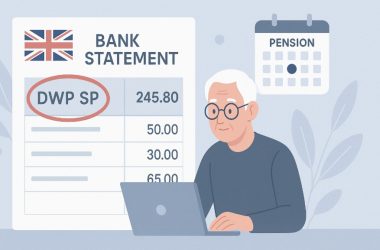Romania’s macroeconomic market is a rapidly growing financial landscape. It features immense potential for investors seeking to tap into Eastern Europe’s growing economies.
As an EU member state, Romania has made significant effort in its economic development, particularly following a series of privatization initiatives over the last decade.
This has led to a steady increase in foreign direct investment (FDI) and robust GDP growth, making Romania an attractive destination for international traders and investors.
For those interested in exploring this market, platforms like MetaTrader 4 Demo offer a valuable entry point, providing a simulated trading environment that helps users understand market dynamics without any financial risk.
Tips for Navigating the Evolving Romanian Financial Landscape
In-Depth Analysis of Romania’s Investment Climate

Almost two-thirds of Romania’s FDI stocks are concentrated in the Bucharest-Ilfov region, indicating the area’s economic significance.
Plus, in 2022, 8.7 per cent of FDI was directed towards the central region of the country, with a diversification of investment options across different regions. This investment spread highlights Romania’s overall economic health and many opportunities it presents across different sectors.
Romania’s economy is classified as upper-middle income, with solid foundations in both industrial and agricultural sectors. The nation’s EU integration has bolstered its economic standing and growth prospects, making it a promising market for foreign investors.
Romania’s Stock Exchanges and Investment Avenues
Romania boasts two main stock exchanges:
- Bucharest Stock Exchange: Founded in 1882, this is the primary stock exchange in Romania. It merged with the RASDAQ, Romania’s OTC exchange, in 2005. The exchange trades a variety of securities, including equities, government and corporate debt, fund units, and structured products.
- SIBEX: Serving as Romania’s second-largest exchange, SIBEX specializes in derivative securities. It offers trading in futures and options on stocks, indexes, currencies, interest rates, and commodities like gold.
Romania’s Equity Market Overview
The BET index, comprising Romania’s ten largest listed companies, is a significant indicator of the country’s equity market health. In the past year, Romanian equities have yielded a positive return of 16%, demonstrating solid performance relative to other European markets.
Investment Options in Romania

Investors can approach Romanian markets through:
- Banks: Options include Banca Transilvania, Romanian International Bank, CEC Bank, Alpha Bank, ABN Amro, Raiffeisen Bank, Citibank Romania, and Libra Bank.
- ETFs: ESR: NYSE Arca, transitioning to iShares Frontier and Select EM ETF, offers exposure to Eastern Europe’s emerging markets.
Investment Strategies and Considerations
For new investors or folks with limited market info, starting with investment funds that focus on Romanian stocks and bonds is advisable. The Bucharest Stock Exchange lists many key companies, particularly in energy, utilities, and banking.
The high dividend rates of these sectors, averaging over 10% per year, have been a significant draw for investors.
Websites like AAF provide data on investment funds, while the Bucharest Stock Exchange website offers detailed information on listed companies and market trends. Additionally, Investor Clubs can be a valuable resource for gaining market insights.
Direct Investments and Tax Implications
For direct investments, investors require the services of a broker, either an independent firm or a bank. Non-residents are exempt from Romanian taxes but must comply with their home country’s tax laws. Brokers assist with fiscal registration and provide necessary documentation for tax purposes.
Consumer Spending Behavior in Romania
Table 1: Inflation Impact and Consumer Response
| Period | Inflation Rate (%) | Average Price Rise in Consumer Goods (%) | Volume Change (%) | Consumer Response |
| Q2 2023 | 10.3 | 19.3 | -2 | Shift to value-seeking behavior |
Explanation: Over recent quarters, Romanian consumers have faced the challenge of persistent inflation, leading to a cautious approach in their spending habits.
Despite inflation decelerating to 10.3% in the second quarter of 2023, the impact of prolonged high prices has been significant. This period saw consumer goods prices rise by an average of 19.3% while the volume of goods purchased decreased by 2%.
As a result, consumers are increasingly focusing on finding the best prices, opting for private labels, discount stores, or promotional products.
FMCG Sales Growth in Romania

Table 2: FMCG Market Dynamics
| Period | Value Growth (%) | Volume Change (%) | Price Increase (%) |
| Q2 2023 (Romania) | 17.3 | -2.0 | 19.3 |
| Q1 2023 (Romania) | – | -4.6 | 23.1 |
| Last 12 Months (Europe) | 9.2 | -2.3 | 11.5 |
Table 3: Regional Comparison of FMCG Market
| Country | 12-Month Value Growth (%) | Q2 2023 Value Growth (%) | Volume Loss (%) |
| Romania | 18.3 | 17.3 | 2.7 |
| Hungary | 22.8 | 18.4 | 7.1 |
| Kazakhstan | 22.7 | – | – |
| Serbia | 19.5 | – | – |
| Bulgaria | 19.3 | – | – |
| Ukraine | – | 43.7 | – |
| Croatia | – | 17.6 | – |
| Latvia | – | – | 11.2 |
| Slovakia | – | – | 5.2 |
Explanation: The FMCG sector in Romania has shown remarkable resilience in the face of economic challenges. Despite a general decline in consumption volumes, the sector achieved a 17.3% growth in value in Q2 2023 compared to the same period last year.
This growth is significant, particularly when considering the 2.0% decline in volume and a 19.3% increase in prices during the same period.
Comparatively, across Europe, the average value growth for FMCG markets was 9.2%, with a volume decrease of 2.3% and a price increase of 11.5%. Within the region, Romania’s performance over the past 12 months is noteworthy, ranking fifth in terms of value growth.
But, in Q2 2023, Romania’s growth rate was surpassed by only three countries: Ukraine, Hungary, and Croatia. Importantly, Romania stands out for having one of the smallest volume losses in the region, indicating a relatively stable consumer market amidst economic fluctuations.
Romania presents a promising opportunity in Eastern Europe’s financial landscape, characterized by robust growth and resilience.
As an EU member, it has attracted significant foreign direct investment, particularly in key sectors like industry and agriculture. The Bucharest Stock Exchange and SIBEX offer diverse investment opportunities, reflecting the dynamism of the Romanian market.
Despite inflationary challenges, the adaptive consumer spending behaviour and the steady growth in the FMCG sector highlight the economy’s stability.
For investors exploring this market, the MetaTrader 4 Demo platform offers a valuable, risk-free environment to navigate Romania’s economic complexities.
Romania’s combination of a stable consumer market and favourable investment climate makes it an attractive destination for investors.







